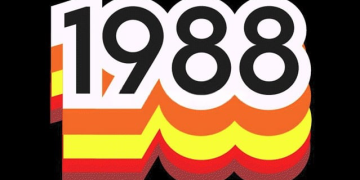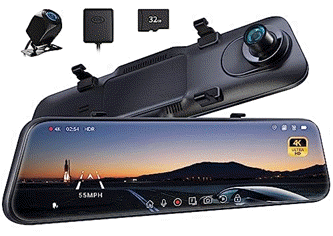Jamie Carter, Senior Contributor
2025-08-11 06:30:00
www.forbes.com
Topline
Overnight on Monday, Aug. 12, through Tuesday, Aug. 13, sees the annual peak of the Perseid meteor shower, when up to 75 “shooting stars” per hour can normally be seen in a dark, moonless night sky away from light pollution. However, the presence of the full sturgeon moon in the night sky this year will make faint meteors harder to spot.
In this 20-second exposure, a meteor lights up the sky over the top of a mountain ridge near Park City, Utah.
NASA/Bill Dunford
Key Facts
The Perseid meteor shower will peak around 20:00 UTC (4:00 p.m. EDT) on Monday, Aug. 12. That means the early hours of Sunday, Aug. 11, Monday, Aug. 12, and Tuesday, Aug. 13 are when meteors will be most numerous.
Just a handful of the up to 75 “shooting stars” per hour that would normally be visible are expected to be seen by skywatchers this year because of an 84%-lit waning gibbous moon. The moon will be in the night sky for the first half of the week.
As the moon rises, so does Saturn, which is approaching its closest and brightest point to Earth for the year. It will reach opposition on Sept. 21.
By Friday, Aug. 15, the moon will have decreased in brightness and will rise around midnight, making sky conditions better for viewing what remains of the peak of the Perseid meteor shower.
How Bright Is Moonlight?
On the night of the peak of the Perseid meteor shower, there will be an 84%-lit waning gibbous moon, the leftovers of the weekend’s full moon. Although the advice is always to escape light pollution to see more “shooting stars,” the full-ish moon this year makes that moot. “A gibbous moon like on the night of the Perseids peak typically makes a dark sky about as bright as a moonless night sky in a small city or relatively distant suburbs at the edge of major metro areas,” said Dr. Qicheng Zhang, astronomer at Lowell Observatory in Flagstaff, Arizona, in an email.
Which Direction Do You Look For Perseids?
“Shooting stars” can appear anywhere in the night sky at any time, so an observing location with as wide a view of the sky is wise. However, what you will notice if you see multiple meteors is where they appear to come from. Trace their trajectory back, and you’ll come to the northeastern night sky, where the constellation Perseus is located (it’s rising as the night sky darkens). This is the radiant point of the Perseids, hence their name. If you see a “shooting star” that doesn’t trace back to Perseus, it isn’t a Perseid. It’s probably a sporadic — a random meteor — or one from the Delta Aquariid meteor shower, whose radiant point is the constellation Aquarius in the south.
How To Photograph ‘shooting Stars’
The easiest way to photograph a “shooting star” is to use a manual DSLR or mirrorless camera and a wide-angle lens on a tripod. The trick is to take a sharp, long-exposure image of the stars and then simply set the camera to take the same image for multiple hours. Manually focus the lens on the stars (or set the lens to infinity focus), use a shutter speed of 30 seconds, then adjust the settings for aperture (from around f/2.8) and ISO (800-1600), and shoot in raw. Take the same shot 200 times — preferably using an intervalometer or a shutter release cable on lock — and you may catch a “shooting star.”
Further Reading
Enhance your driving experience with the P12 Pro 4K Mirror Dash Cam Smart Driving Assistant, featuring Front and Rear Cameras, Voice Control, Night Vision, and Parking Monitoring. With a 4.3/5-star rating from 2,070 reviews and over 1,000 units sold in the past month, it’s a top-rated choice for drivers. The dash cam comes with a 32GB Memory Card included, making it ready to use out of the box. Available now for just $119.99, plus a $20 coupon at checkout. Don’t miss out on this smart driving essential from Amazon!
Help Power Techcratic’s Future – Scan To Support
If Techcratic’s content and insights have helped you, consider giving back by supporting the platform with crypto. Every contribution makes a difference, whether it’s for high-quality content, server maintenance, or future updates. Techcratic is constantly evolving, and your support helps drive that progress.
As a solo operator who wears all the hats, creating content, managing the tech, and running the site, your support allows me to stay focused on delivering valuable resources. Your support keeps everything running smoothly and enables me to continue creating the content you love. I’m deeply grateful for your support, it truly means the world to me! Thank you!
|
BITCOIN
bc1qlszw7elx2qahjwvaryh0tkgg8y68enw30gpvge Scan the QR code with your crypto wallet app |
|
DOGECOIN
D64GwvvYQxFXYyan3oQCrmWfidf6T3JpBA Scan the QR code with your crypto wallet app |
|
ETHEREUM
0xe9BC980DF3d985730dA827996B43E4A62CCBAA7a Scan the QR code with your crypto wallet app |
Please read the Privacy and Security Disclaimer on how Techcratic handles your support.
Disclaimer: As an Amazon Associate, Techcratic may earn from qualifying purchases.









































































































